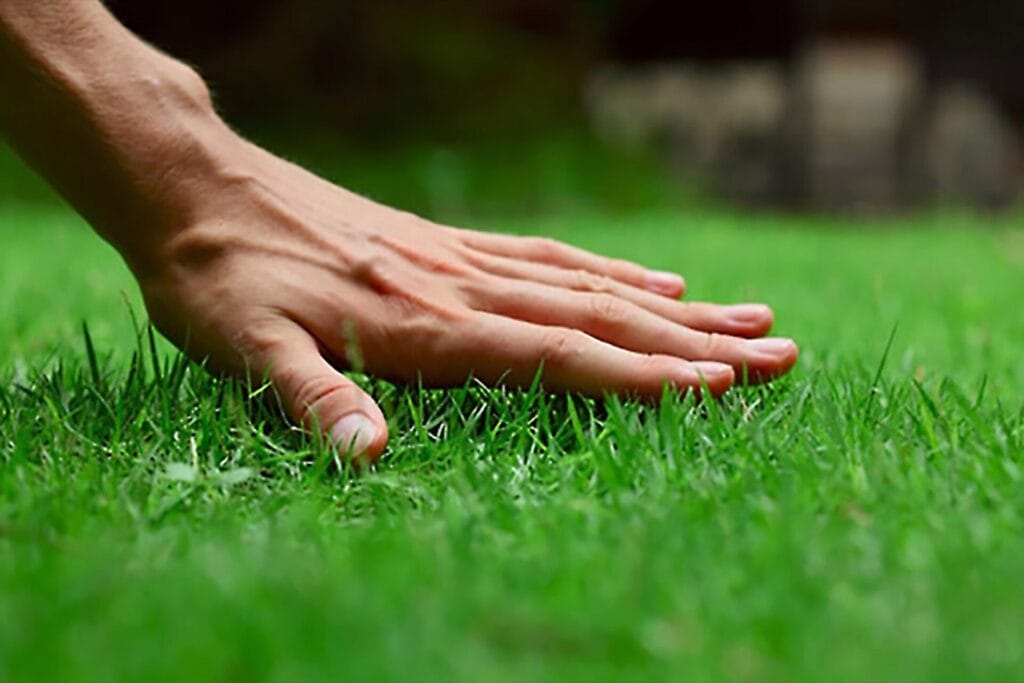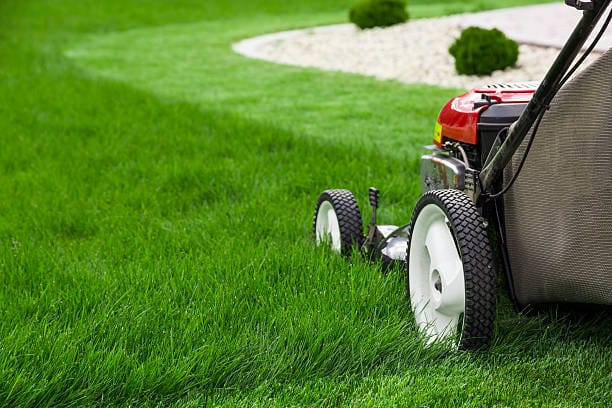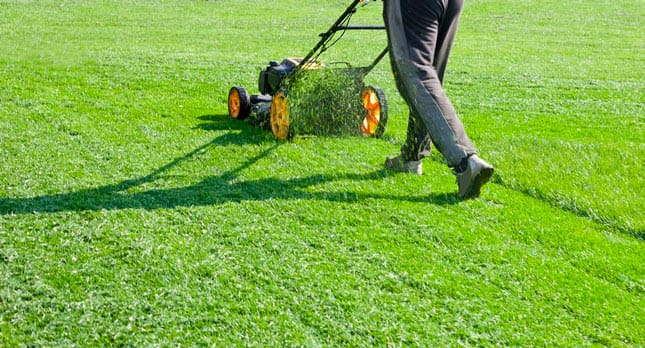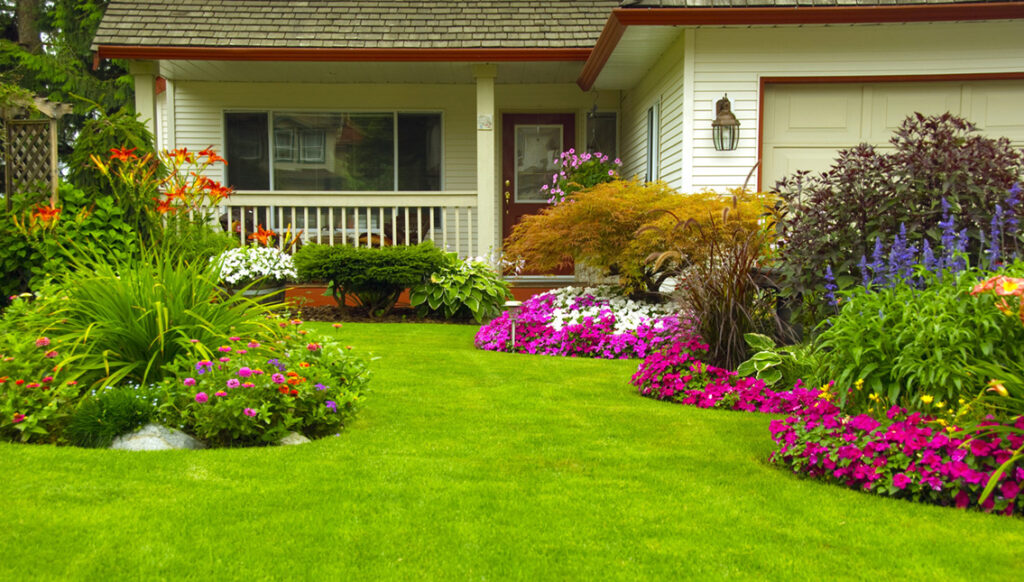Mowing Mistakes to Avoid in Georgetown: Are You Cutting Your Grass Too Short?
Maintaining a healthy and vibrant lawn in Georgetown can be a challenge, especially with the region’s hot summers and frequent droughts. One of the most common mistakes homeowners make when it comes to lawn care is cutting their grass too short. While it might seem like a good idea to keep your lawn looking neat and tidy, cutting grass too short can have negative long-term effects. In this blog, we’ll explore the mistakes to avoid when mowing your lawn in Georgetown, especially the crucial issue of cutting grass too short.


The Importance of Proper Mowing Height
Mowing your grass at the right height is crucial to maintaining a healthy lawn. Grass that is cut too short, also known as “scalping,” can become stressed, leading to a variety of problems such as:
- Weed growth: When grass is too short, it becomes less effective at shading the soil, giving weeds the opportunity to thrive.
- Drought stress: Short grass has less surface area to absorb sunlight, making it more susceptible to drought stress, especially in Georgetown’s hot and dry summer months.
- Increased disease risk: Cutting grass too short can also make it more prone to diseases and pests because the grass doesn’t have the energy reserves it needs to fight off problems.
How Short is Too Short?
In Georgetown, the recommended mowing height depends on the type of grass in your lawn. The most common grasses found in the area are Bermuda, Zoysia, and St. Augustine. Here are some general guidelines to follow:
- Bermuda grass: Ideally, Bermuda grass should be mowed to a height of 1 to 1.5 inches. During the summer, it can be mowed slightly lower, but avoid cutting it too close to the soil, as it can lead to scalping.
- Zoysia grass: Zoysia grass thrives when mowed to a height of 1 to 2 inches. Mowing it too short will weaken the grass, leaving it more vulnerable to heat and drought stress.
- St. Augustine grass: This warm-season grass should be kept at a height of 2.5 to 4 inches. Cutting it too short can lead to thinning and weak growth, especially during Georgetown’s hot summers.
The first step to a healthy lawn is selecting the right type of grass. Georgetown, TX, experiences hot summers and mild winters, making it crucial to choose a grass that thrives in these conditions. Warm-season grasses like Bermuda, Zoysia, and St. Augustine are perfect for Georgetown’s climate, as they are drought-tolerant and grow best in warmer temperatures.
Bermuda grass is especially popular for its durability and ability to withstand heavy foot traffic, making it a great choice for families with kids and pets. Zoysia offers a lush, thick texture and is more shade-tolerant, while St. Augustine is ideal for areas with a mix of sun and shade. Planting the right grass ensures that your lawn is better equipped to handle the local weather and challenges.
Proper watering is essential to maintaining a lush lawn in Georgetown, TX. During the summer months, it’s tempting to water your lawn daily, but overwatering can lead to shallow root systems and weed growth. Instead, aim to water your lawn deeply but infrequently.
The best time to water is early in the morning, before the sun gets too hot. This allows the water to soak into the soil before it evaporates. Aim for about 1 to 1.5 inches of water per week, including rainfall. If you’re unsure, a simple way to measure water is to place a rain gauge or a small container (like a tuna can) on your lawn while watering. Once it fills up to about 1 inch, stop watering.
Aeration is a game-changer when it comes to lawn care in Georgetown, TX. Over time, the soil in your lawn can become compacted, which makes it harder for water, nutrients, and air to reach the roots of your grass. Aerating your lawn once a year (typically in the fall) creates small holes in the soil, improving the flow of essential elements to the root system.
There are two main ways to aerate: using a spike aerator, which punctures holes in the soil, or a core aerator, which removes small plugs of soil. Both methods are effective, but core aeration is generally preferred because it removes soil, creating more space for grass roots to grow.
Fertilizing your lawn is key to keeping it healthy and green. However, not all fertilizers are created equal, and it’s important to choose one that provides the right balance of nutrients for Georgetown’s soil. A soil test can help you understand your lawn’s specific needs, but generally speaking, a fertilizer with a balanced ratio of nitrogen, phosphorus, and potassium is ideal.
The best time to fertilize in Georgetown is during the growing season, typically in late spring or early summer, when the grass is actively growing. Avoid fertilizing in the winter months, as the grass is dormant and won’t benefit from the extra nutrients. Additionally, be sure to follow the recommended application rate to prevent over-fertilization, which can cause nutrient imbalances and harm your lawn.
Mowing is more than just a weekly chore—it’s a vital part of lawn care. One of the most common mistakes homeowners make is mowing their grass too short. Cutting your grass too short can stress it out, making it more vulnerable to disease and pests. Instead, aim to mow your lawn at a height of about 2.5 to 3 inches, depending on the type of grass. This encourages deeper root growth and helps the grass retain moisture.
Make sure your mower blades are sharp to avoid damaging the grass. Dull blades can tear the grass, leaving jagged edges that are more susceptible to disease. Mowing your lawn regularly and at the correct height will ensure a lush, healthy look year-round.
The Benefits of Proper Mowing
Mowing your lawn at the correct height doesn’t just avoid problems—it also offers several benefits:
- Enhanced drought resistance: Properly mowed grass retains moisture better, helping your lawn withstand Georgetown’s hot summers.
- Improved lawn health: Proper mowing encourages the development of deep roots, leading to a thicker, healthier lawn that’s better equipped to withstand disease and pest damage.
- Fewer weeds: Grass that is kept at the right height provides a natural barrier to weeds, reducing the need for chemical treatments.
Conclusion
Cutting your grass too short is a common mistake that can harm your lawn’s health in Georgetown. By following the proper mowing height for your grass type and implementing best mowing practices, you can ensure that your lawn stays vibrant and resilient throughout the year. Avoid the temptation to scalp your lawn, and instead, mow with care to promote a healthy, beautiful lawn that will thrive in Georgetown’s challenging climate.
If you’re ever unsure about the right mowing height or lawn care techniques for your specific grass variety, don’t hesitate to consult with a local lawn care professional. They can offer expert advice to help your lawn look its best all year long. Happy mowing!


